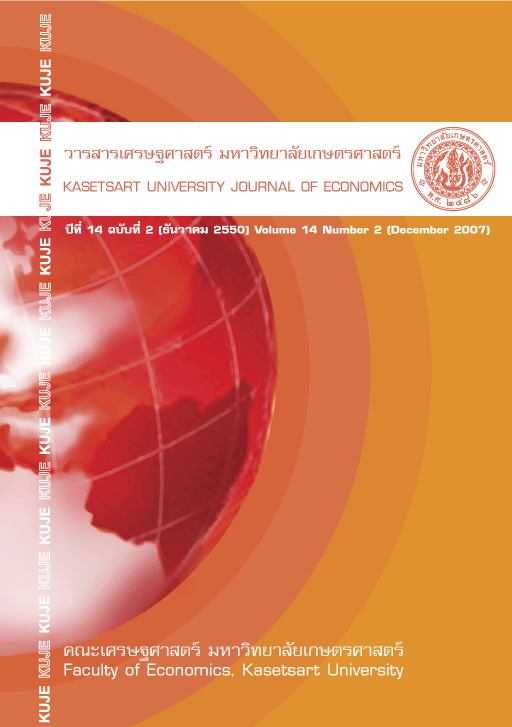ผลกระทบทางการเมืองและเศรษฐกิจของนโยบายแทรกแซงราคาลำไย
Main Article Content
Abstract
บทคัดย่อ
บทความนี้วิเคราะห์ผลดำเนินงานนโยบายแทรกแซงราคาลำไยจากการหลุดจำนำ การขาดทุนของรัฐ และรายได้ของเกษตรกรที่เพิ่มขึ้น วิเคราะห์รวมถึงกระบวนการกำหนดนโยบายที่มีต่อผลการดำเนินงาน ช่วงปี 2545-2547 รัฐขาดทุนต่อวงเงินที่รัฐใช้แทรกแซงร้อยละ 90.98 เกษตรกรมีรายได้เพิ่มขึ้นต่อวงเงินแทรกแซงเพียงร้อยละ 23.08 รายได้ส่วนหนึ่งตกแก่กลุ่มทุจริตโดยเฉพาะวิธีการสวมสิทธิ์เกษตรกร ระบบทุนนิยมโลก โครงสร้างส่วนบนของระบบเศรษฐกิจ อุปทานของนโยบาย และอุปสงค์ของนโยบาย เป็นปัจจัยที่ส่งผลให้กระบวนการกำหนดนโยบายมีความไม่โปร่งใส การจ่ายชดเชยส่วนต่างราคาให้เกษตรกรโดยตรงแทนวิธีจากรับซื้อ/รับจำนำ จะลดขั้นตอนความซับซ้อนที่เป็นเหตุของการทุจริต และน่าจะทำให้เม็ดเงินถึงเกษตรกรได้มากขึ้น
คำสำคัญ : นโยบายแทรกแซงราคาลำไย, เศรษฐศาสตร์การเมือง, กระบวนการกำหนดนโยบายเศรษฐกิจ
Abstract
This article analyzes the performance of the longan price intervention policy by usingthe rate of forfeiture, the revenue loss to the government, and the change in farmers' income. Thestudy includes an analysis of the policy formulation process and its effect on the policyperformance. During year 2002-2004 the government lost 90.98% of its total interventioninvestment. Farmers' income increased merely 23.08%. Some of the budget was transferred tointerest groups particularly by means of stealing the farmers' right. A number of factors rangingfrom inappropriate policy instruments to opportunistic behavior, contributed to poor policyperformance and the tendency towards graft and corruption. Direct deficiency payment (the difference of target price and market price) to farmers would reduce the complicated procedures,which tended to generate corruption. Using this measure, farmers would likely get more benefit.
Keywords : price intervention policy, longan, political economics, decision-making process ofeconomic policy
Article Details
The paper is published under CC BY-NC-ND, in which the article is freely downloaded and shared in its original form non-commercially and its citation details are identified.


